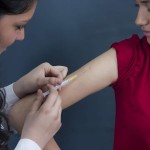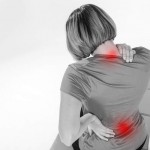Bedsores
Bedsores are also called pressure sores or pressure ulcers.Bedsores are injuries to skin and underlying tissues resulting from prolonged pressure on the skin. Bedsores generally develop on skin that covers bony areas of the body, such as the heel, ankles, hips or buttocks.
People most at risk of bedsores are those with a medical condition that limits their ability to change positions, requires them to use a wheelchair or confines them to a bed for prolonged periods.
Bedsores can develop quickly and are often difficult to treat. Several care strategies can help prevent some bedsores and promote healing.
Symptoms
Symptoms of a bedsores are:
Red skin that worsens over time
There is an appearance of a blister, then an open sore
Pressure sores most commonly occur on the
Ankles
Back of head
Back
Buttocks
Elbow
Hips
Heels
Shoulders
Pressure sores are categorized as deep tissue injury which may be purple or maroon. Bedsores may be an area of skin or blood-filled blister caused due to damage of soft tissue from pressure. The area around may be sore, firm, mushy, boggy, warmer, or cooler compared with tissue nearby.
Causes
Pressure on the skin leads to reduced blood flow to the area. Without enough blood the skin dies leading to formation of ulcer.
One may get a bed sore if :
One uses a wheelchair or is bed ridden for a long time
If one Cannot move certain parts of body without help because of a spine or brain injury or disease such as multiple sclerosis
One is suffering from a disease that affects blood flow, including diabetes or a vascular diseases
One has Alzheimer's disease or another condition that affects your mental status
Have fragile skin
Have urinary incontinence or bowel incontinence
Lack of nutrition (malnourishment)
Diagnosis
If one is bedridden or in a wheelchair, the doctor or nurse should be watching for signs of bedsores. The severity of your skin breakdown may be categorized as follows:
Stage 1: Abnormal redness of the skin, with skin intact. This stage is reversible.
Stage 2: The redness progresses to an abrasion, blister, or shallow crater. This stage is also reversible.
Stage 3: A crater-like sore or ulcer that has begun to extend beneath the skin. This stage may be life-threatening.
Stage 4: Skin loss with extensive destruction or damage to muscle, bone, or supporting structures such as tendons or joint capsules. This stage may be fatal.
Treatments
The treatment of bedsores depends on the severity (i.e., the stage) of the wound. Depending on the severity, a variety of approaches may be used to promote healing. They include synthetic dressings, saline dressings, acetic acid compresses, and various antibiotic dressings (bedsores are particularly prone to infection).
For more severe wounds, surgery may be necessary to remove areas of dead skin. The most important step in both treatment and prevention of bedsores is relieving pressure by frequent repositioning.
Preventions
The best way to prevent bedsores is by moving around frequently to avoid constant pressure against one's body to redistribute body weight and promote blood flow to the tissues. If one can't move, he or she should be helped to reposition at least every 2 hours or every 15 minutes if you are seated in a chair. Pillows or foam wedges can help to shift weight if one is unable to move. Range-of-motion exercises can help prevent contractures; improve circulation; and maintain joint integrity, mobility, and muscle mass.
The bed should not be elevated more than 30 degrees
References:
US National Library of Medicine









